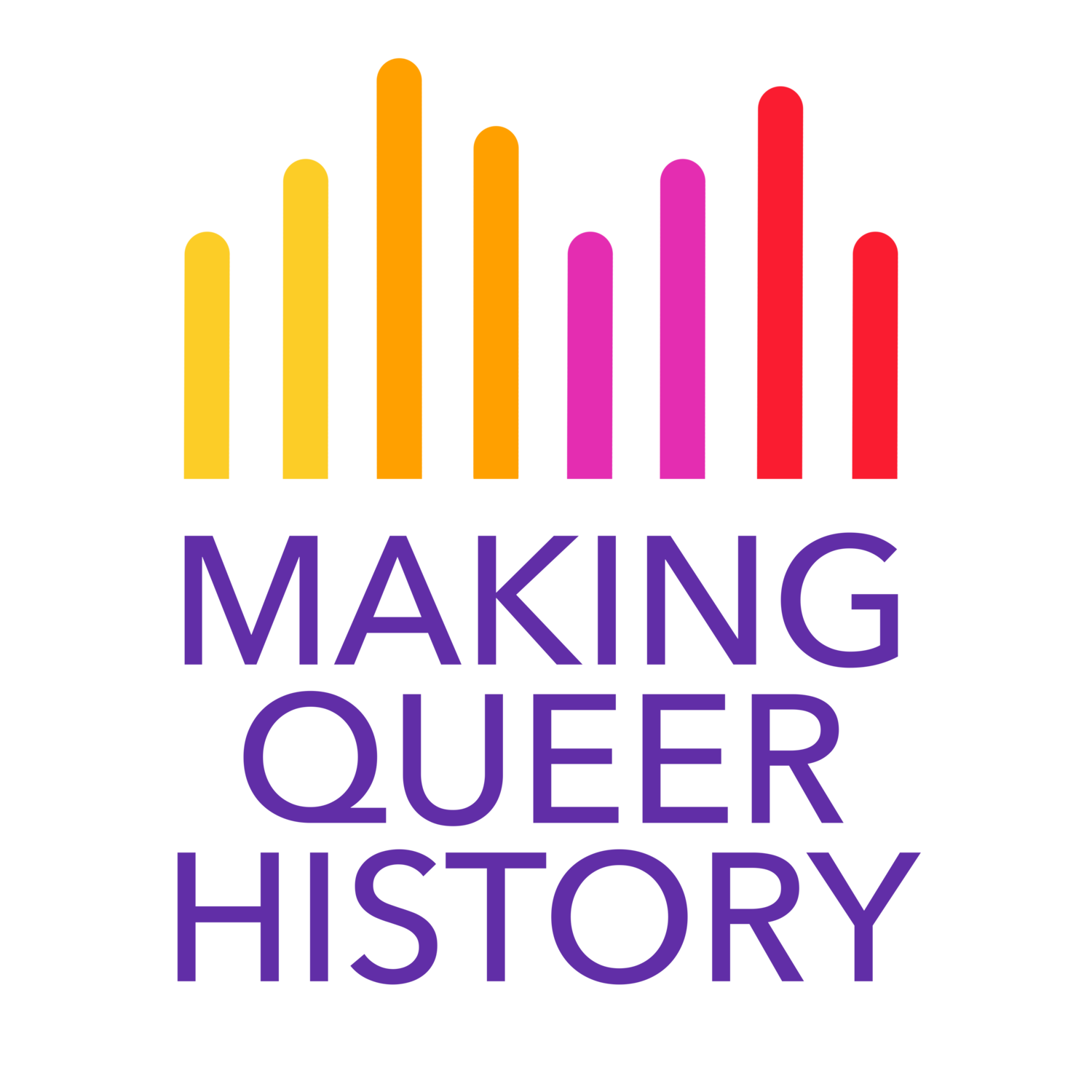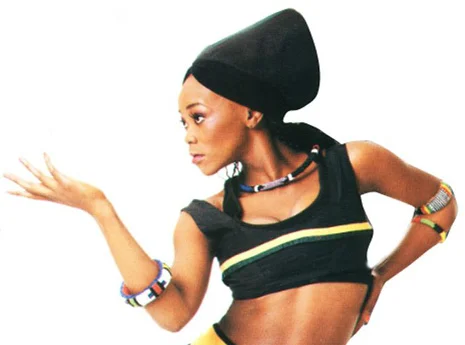As our celebration of Black History Month continues we have the privilege of looking at another incredible black queer person in the queer community’s history: Rotimi Fani-Kayode. As with many of the people, we write about, Rotimi was an artist. A photographer, more specifically, whose work was revolutionary for his time and remains so today.
Brenda Fassie
This week we are excited to begin our celebration of Black History Month! To start, we will be looking at some more recent history, specifically the life and times of Brenda Fassie. Fassie was a South African pop star who gained international fame for her work and for the many media storms that built up around her. She was the niece of the famed activist-turned-president, Nelson Mandela, and also held many of the same political stances throughout her life. A number of her songs were even banned in America. She was incredibly influential during her lifetime, exchanging the safety privacy could have offered her for a dramatically public life. It seems only right that we explore that life now.
Kiyoshi Kuromiya
Hello, all! This is the last article for the month of January and the last article that’s going to be written by Grace – Laura is coming off hiatus in February so Queer History can celebrate Black History Month!
Federico Garcia Lorca
This week we’ll be looking at the life, poetry, and activism of Federico García Lorca. While his romances rarely ended well, Lorca made waves by being unapologetically queer in the face of a vindictive, bigoted, and aggressive Spanish government.
Wilfred Owen
Wilfred Owen was a war poet who served in the First World War; his experiences on the field led not only to the aforementioned mental illness but also to some truly evocative, anti-war poetry and a romance with fellow poet, Siegfried Sassoon.
Virginia Woolf
Virginia Woolf is a complex and problematic character. Like many of the aristocrats of her time, she was deeply racist and anti-semitic. Her queerness does not excuse these prejudices. However, her queerness and struggles with mental illness are still worth exploring. These aspects of her personality, as expressed through her relationships as well as through her writing, allow modern readers of her work to find not a role model, but rather hints of their own struggles in a pillar of the past.
Tamara de Lempicka
When writing an article about an artist, one expects to have some discussion of the art created by the person in question, but in this case, that is going to be avoided. Tamara de Lempicka was a highly controversial artist, and there is no lack of people studying her work, no matter which side they fall on in regards to its worth. But we are not going to be looking at that, as we are not art experts, and have never claimed to be. We are going to be looking instead at her life, and it is an extraordinary one to discuss.
Reinaldo Arena
To paraphrase the great Terry Pratchett, it is a curse to live in interesting times. Thus, as the world is once again witnessing a great change, we at Queer History are unable to remove ourselves from current events. It is impossible to ignore the connection between what is occurring now in Cuba and what once occurred. This week, this relationship between past and present is found in two deaths: that of Fidel Castro on November 25th, 2016, and that of Reinaldo Arenas on December 7th, 1990.
Rita Hester
When I write my articles, I try to keep them from becoming personal. I replace the I’s with we’s because I am not representing myself, but my community. This week, that didn’t feel possible. I will go back to that format next week, but this week, the article is deeply personal, and it would be a lie to pretend otherwise. Transgender Day of Remembrance is a one-day event, not a week or a month, like Pride. When researching this article, there is a very clear reason for that: because it is too much. It is too much for any person to bear to have a full week of scrolling through the names. I have also found, throughout this week, that everyone who witnesses the names is affected by something different. My fiance was affected by those without names, the ones with the least information, the ones that were hardest to remember because information about them was so scarce. My mother was affected by the words “thrown out of a moving car” repeated so often throughout the list. A friend was left sitting alone after the rest of the room at my local pride center had moved on because of one particular name: a name that was not on the list but deserved to be. Another friend was paralyzed by a name they recognized.
Transgender Day of Remembrance
Today, as most of you are aware, is Transgender Day of Remembrance. This day has been set aside to memorialize transgender people who have been killed in the past year. The Transgender Day of Remembrance was launched in 1999 by Gwendolyn Ann Smith in honor Rita Hester, who had been killed the year before, on December 4th. Since then, it has since grown in momentum, leading to candlelight vigils held worldwide to honour those we have lost. It’s common, at these gatherings, for a list of names to be read out, so the names of those we have lost will be remembered and their lives meditated on. This year, though, we want to go beyond the names.
The Ladies of Llangollen
This week, we find ourselves again surrounded by political turmoil. In moments like these, we always have to consider if our voice is needed in the dialogue. If we could say anything that hasn’t already been said. This week we found there is nothing we need to add, so instead we will take this time we have with our dearest readers and tell you all a love story. The story of the Ladies of Llangollen, Eleanor Butler, and Sarah Ponsonby, two Irish women who fell in love, and lived happily ever after. A type of story that is all too uncommon in our history, but we are happy to share with you now.
The Future of Queer Media
With this final article in our series on queer representation in media, we will look at where we want to see queer media go in the next decade, wrapping up our queer media series. Researching this final leg of the series was difficult, as it's hard to research the future, but we did our best. We interviewed the main team of a project in production, and the Executive Director of Represent, all of whom gave us insight into the present state of queer media, and using our research into the patterns of our past we can get a glimpse of what the future holds.
Queen Christina
Queen Christina, a film as historic as its titular character. Queen Christina was released in 1933, during a time called pre-code. The Hays Code was a set of guidelines written for Hollywood by a group of religious leaders, most notably William Hays, that dictated what could and could not be shown on screen. It was put into place just after the invention of “talkies” and banned numerous “immoral acts” from being shown on film. Among those “immoral acts” was any reference to or implication of homosexuality.
Different from the Others
Different from the Others (Anders Als Die Andern) was the first film to portray queer people positively and explicitly and was released in 1919. Made by queer activists in Berlin, it remains an artifact of queer resistance.
Albert D.J. Cashier
History is shaped by those who tell it, and nowhere is there such an enormous gap than in the history of trans people. Continual erasure and suppression of trans lives and stories throughout time has left few figures to survive censorship. Those who were brave enough to live authentically often were forced to do so in a manner of “stealth”, their identity as a trans person not discussed or documented. This is especially true of American history before the mid-nineteen hundreds. Even among the few surviving figures, their identities have often been misinterpreted and altered through the lenses of hetero/cisnormative historians. One prominent example is the life of Albert Cashier, Civil War soldier and trans man.















